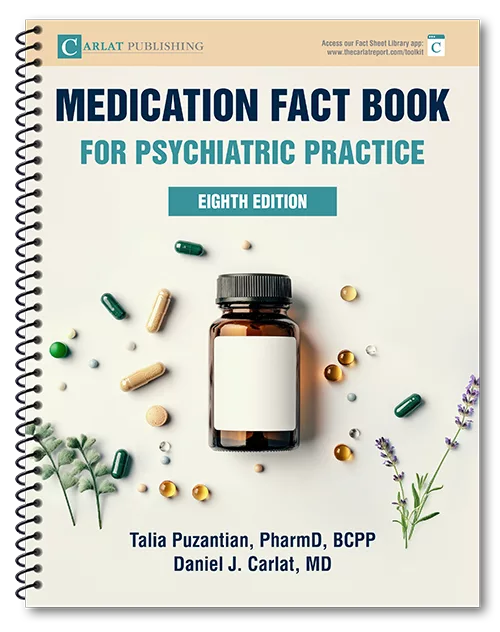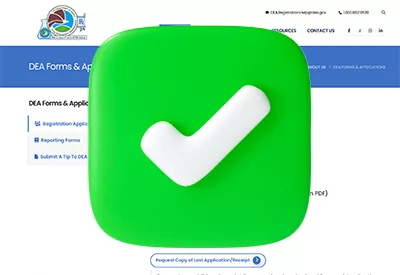Before you cook, oil the pan; before you plant that spring lawn, aerate the soil. Before you start a psych med, these are six things you need to have in place.
Publication Date: 8/04/2025
Duration: 13 minutes, 18 seconds
Transcript:
KELLIE NEWSOME: Welcome to The Carlat Psychiatry Podcast, keeping psychiatry honest since 2003.
CHRIS AIKEN: I'm Chris Aiken, MD, the editor-in-chief of The Carlat Psychiatry Report.
KELLIE NEWSOME: And I'm Kellie Newsome, a psychiatric NP and a dedicated reader of every issue.
CHRIS AIKEN: You are about to hear the first episode in a line of new series of Psychopharm Secrets. We're going to share some expert tips on drug titration. You're gonna learn about psych meds that are better tolerated when they are titrated faster, and even one that has to be started at a high dose and then tapered down to a low dose. And no, I'm not talking about buprenorphine. Listen through to the end of each episode, where we're gonna share a practice-changing research update from our daily psych social media feed. You can join that conversation on there, search for Chris Aiken, MD on LinkedIn, Twitter, Facebook, and Blue Sky. But first, let's set down some basics about starting psych meds. Before you reach for a prescription pad, I try to make sure these things are in order.
KELLIE NEWSOME: Get to know the patient's hopes and fears. This will help you choose the right medication and guide the way you talk about it. Ask questions like, which symptom would you most wanna see improve if we had the right medication? What are some concerns you have about psychiatric medications? Are there any side effects that would be a deal breaker for you that will need to avoid?
CHRIS AIKEN: Number two, offer them a menu of two to three reasonable options. They need not all be medications. Offering other treatment paths enhances trust, especially in a world where information about mental health, benefits of diet, exercise, sleep, and supplements is readily available online. For example, with bipolar depression, I might say we have two good options here, one is Lamotrigine, which is very well tolerated, but takes a little longer to work, like two to three months. The other is Lurasidone or maybe Lumateperone, which works within a week or two, but comes with a bigger risk of side effects. We can also start both together and plan to taper off the rapid-acting one down the road.
KELLIE NEWSOME: Offer realistic hope. Share a generic story of a patient you saw who got better on the medication. Let them know how the medication works. Patients rank understanding the cause of my symptoms as one of their top needs in psychoeducation, but be careful, overly biological explanations can backfire. In experimental studies, patients become more pessimistic about treatment when told that their depression is biological rather than psychological and origin. One way to overcome this dilemma is to emphasize how the medication changes the brain in ways that synergize with a healthy lifestyle. With antidepressants, you can emphasize how they raise neuroprotective factors like BDNF, the same neurotrophic factor that is elevated by exercise, a healthy diet, sleep, and stress reduction. With lithium, I'll talk about neuroprotection, but add that it regulates the genes that regulate the biological clock, which are the same genes that caused bipolar disorder. This ties into the behavioral changes that help stabilize mood, like waking up at regular times and keeping it dark at night. That all sounds good, and we also have evidence that it makes a difference. When shared with patients, this neuroplasticity model led to durable changes in self-efficacy and optimism in several studies of depression. Let's pause for a preview of the CME quiz for this episode.
Earn CME for each episode through the link in the show notes. True or False: In schizophrenia. Informing patients about the risk of tardive dyskinesia raises the risk of non-adherence.
CHRIS AIKEN: Now, for tip number four, set expectations. Let them know how long it'll take to feel better and how long they're gonna need to take the medication for. Lots of patients stay on medications for the long-term that are only intended for short-term use, like antipsychotic augmentation and mood disorders, or Z-hypnotics in insomnia. Set expectations early to keep psychological attachment from congealing. It also gives people time to make lifestyle changes that will help them stop the med down the road.
KELLIE NEWSOME: Five, talk openly about the risks and side effects. Remember, your goal in all this is for the patient to trust you, not to trust the medication. Studies find that open discussions of difficult topics like tardive dyskinesia in schizophrenia does not impair medication adherence, and when done in a way that invites patients to share in the treatment selection, improves adherence and outcomes. When I talk about side effects, I try to pair it with education about how they or we can manage it. With lithium, I'll say weight gain is very rare on this medication, but it will make you thirsty, and you can prevent weight gain by drinking water. Avoid caloric beverages and diet drinks, which put on pounds indirectly. We can also work together to avoid weight gain by checking your thyroid levels. I also ask them to reach out to me if they have any problems, and remind them how.
CHRIS AIKEN: Six, ask your patient how they'd like to start the med. I'll say, would you like to start this medication slowly? Like, if you tend to be sensitive to side effects, or just ramp it up the usual way, so we can treat your symptoms faster. This question isn't always necessary, but in general, the more choices we give patients, the better the outcomes.
There are some exceptions, though. Some patients get anxious and would rather leave things in the hands of the experts. Others get decision fatigue, like patients with cognitive problems, but you're usually gonna figure those exceptions out. The PDR also gives usual rates for how fast we should ramp up a medication. There's no secret formula here. Generally, you can ramp it up about every three to seven days, and keep in mind that as you ramp it up, it's not always gonna reach the serum level that matches the dose because of the half-life thing. So even if you keep it a consistent dose every day, the blood levels are still gonna rise while at the same dose because of the medication's half-life. Likewise, when you check a blood level of medications, you wanna wait at least five half-lives after reaching the target dose before checking it.
KELLIE NEWSOME: That's the basics. Next week, we'll look at specific medications that break these rules or that have little quirks about them that are useful to know when you're starting. You'll find out why prazosin needs to be started at one milligram, not two. And now for the study of the day, it's a straightforward one, but it has a hefty title: Bright Light Therapy in the Morning or Midday for the Treatment of Nonseasonal Depression in Bipolar Disorder: A Dose Escalation Phase I/II Randomized Double-Blind Trial by Pierre Geoffory, and colleagues in the Journal of Clinical Psychiatry.
CHRIS AIKEN: Forget about starting meds for a second. This one tells you how to start light therapy. This trial does not prove that light therapy works in bipolar depression. We already know that from earlier trials, and it does treat bipolar depression with a medium to large effect size regardless of season, and all these trials they used it in any season in bipolar. What this trial tells us is more about how to dose the light. The title has a few pearls that are worth unpacking before we even get into the study. Like I said, notice it says Nonseasonal Depression. That's right. Nearly all the light therapy trials in bipolar depression were done regardless of season. So don't just think of it for wintertime. Why circadian rhythms are pretty unhinged in bipolar, so setting them with regular light is likely to help in the winter or the summer, and light therapy also works outside of wintertime in unipolar depression. 1/3 of those trials in unipolar were done in non-seasonal depression. Second, notice that it says this is a Phase I/ II Trial. That means that it combines elements of a Phase I trial, which is meant to evaluate safety and dosing, and a Phase II trial, which is meant to test the treatment in a larger population. In this case, they're testing two dosing strategies of light therapy. Morning time, around 8:00 AM, give or take half an hour, and midday at 12/noon, give or take half an hour. Now, why are they so concerned about whether to give light therapy in morning or at noon? There has been a concern that morning dosing is too strong and may destabilize mood, causing mania. In winter depression, morning dosing between 5:00 AM and 8:00 AM is more potent. Or think of it this way. There is a lot of sun in the sky at midday, right? So if you're giving light therapy at midday, it's more in line with the natural flow of what the body's already seeing. The 8:00 AM dosing is a little more disruptive. Either way, you generally should not dose a light box after 2:00 PM. Giving light therapy after 2:00 PM can flip the circadian rhythm the wrong way, causing insomnia and worsening mood. So in this trial, the multicenter researchers who are based in France and Chicago, randomized 38 patients with bipolar I or II depression to receive either morning or midday, that's 12/noon light. Notice that there is no placebo arm in this trial, and that's why it's not meant to prove that light therapy works. Instead, the primary outcome was whether light therapy triggered hypomanic or manic switching while they were raising the dose of the duration of the light. Both groups titrated the light therapy slowly, which is also thought to lower the risk of mania because you're introducing it gradually. In the end, here's the bottom line. Both dosing methods were equally safe, and both had low rates of switches to hypomania, around 6% in each arm. All of these hypo manias were manageable by lowering the duration of the light, and none of them flipped into full mania. These are reassuring results, and they are also in line with the placebo-controlled or actually sham-controlled trials of light therapy and bipolar, some of which gave it in the morning, and some of which gave it at noon; and all of which had low rates of hypomania. One thing that is unique about this trial is that they used light glasses instead of a light box. The brand was Luminette, L-U-M-I-N-E-T-T-E. Although the study was actually independently funded, the glasses delivered a dose of light that is similar to a light box, 10,000 lux. Now glasses are portable, and they might be easier to use, but I do not recommend them at this time, because we don't know much about their safety and efficacy, like we do with light boxes and glasses do have some negative trials in depression, but, this is is only a phase I to II study, which means we look forward to more tests of this pragmatic glasses strategy for delivering therapeutic doses of life.
KELLIE NEWSOME: Persuasion and Healing is a psychotherapy textbook unlike any other. With an anthropologist's eye, the book looks at common ingredients in healing, from religious ceremonies to psychopharmacology to psychoanalysis. It's been in print for over 60 years, and in our August issue, we interviewed the author, psychiatrist Julia Frank. Check it out online.


_-The-Breakthrough-Antipsychotic-That-Could-Change-Everything.webp?t=1729528747)



